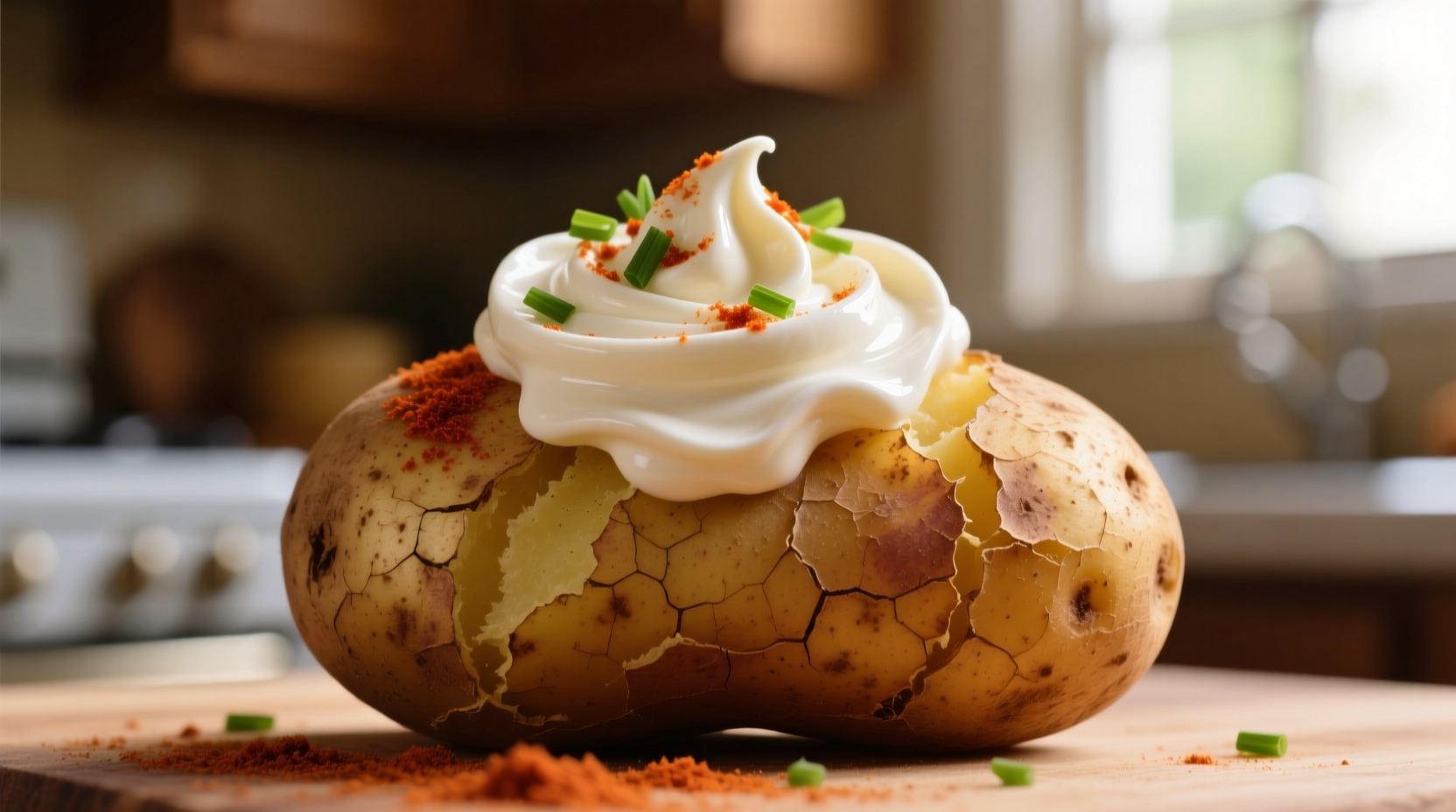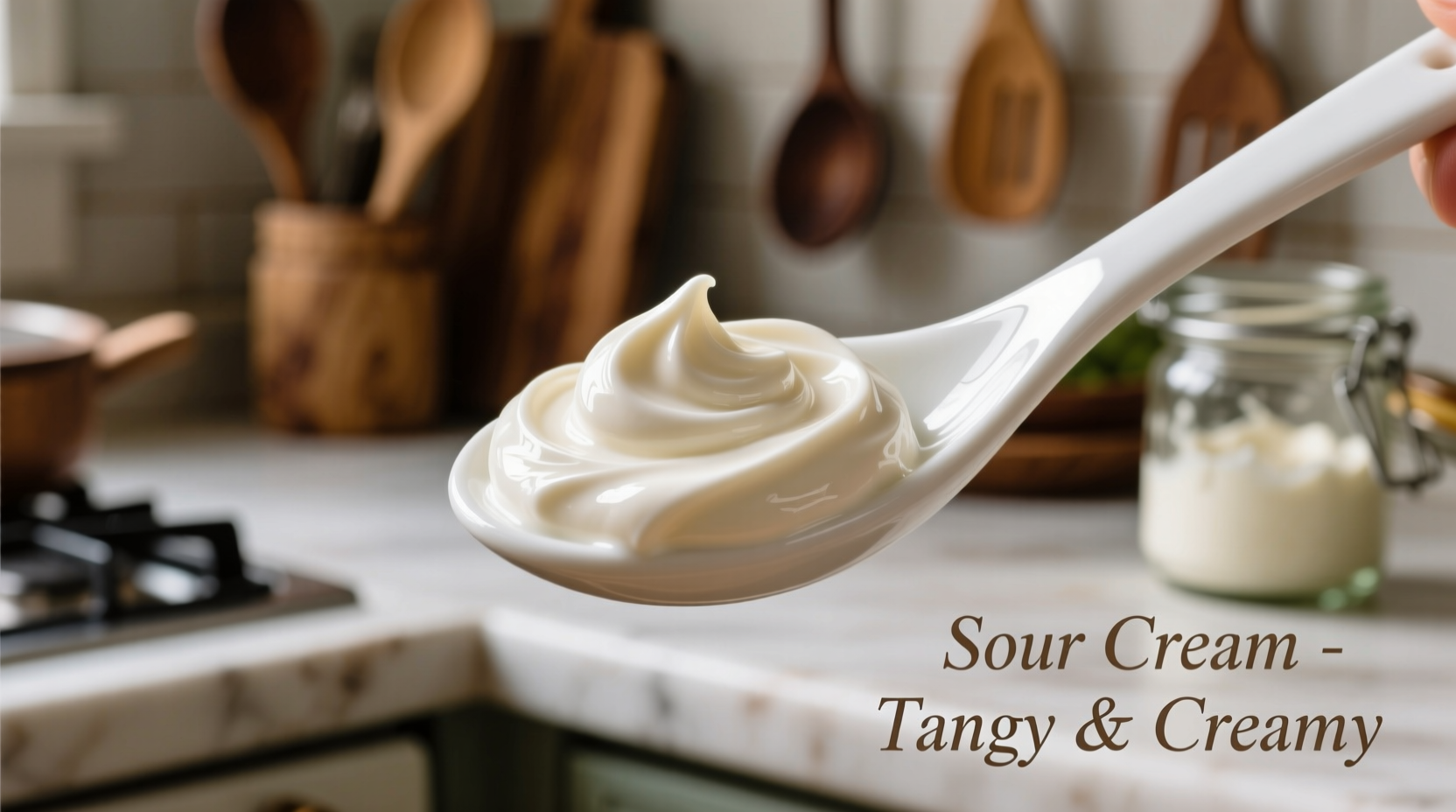Understanding Sour Cream's Flavor Profile
When you take your first spoonful of quality sour cream, you'll experience a complex interplay of flavors and textures that make it indispensable in kitchens worldwide. Unlike its name might suggest, sour cream isn't aggressively sour. Instead, it offers a balanced flavor profile that enhances rather than dominates dishes.
The distinctive taste comes from the fermentation process, where lactic acid bacteria convert cream's natural sugars into lactic acid. This process creates that signature tang while preserving the rich dairy foundation. Food scientists at the USDA Dairy Products Standards confirm that properly cultured sour cream maintains a pH between 4.4-4.5, creating that perfect balance of tanginess without overwhelming sourness.

How Sour Cream Compares to Similar Dairy Products
Understanding sour cream's taste requires comparison with other cultured dairy products. Many home cooks confuse sour cream with yogurt or crème fraîche, but each has distinct characteristics that affect how they perform in recipes.
| Dairy Product | Acidity Level | Texture | Flavor Notes | Best Culinary Uses |
|---|---|---|---|---|
| Sour Cream | Moderate (pH 4.4-4.5) | Thick, smooth, slightly grainy | Tangy with buttery undertones | Toppings, dips, baked goods |
| Greek Yogurt | High (pH 4.0-4.4) | Dense, sometimes watery | Sharper tang, less creamy | Marinades, healthier substitutions |
| Crème Fraîche | Mild (pH 4.5-4.6) | Velvety, pourable | Subtle tang, rich butter notes | Sauces, soups, desserts |
| Cream Cheese | Low (pH 4.6-4.8) | Firm, spreadable | Very mild tang, dense creaminess | Frostings, cheesecakes, spreads |
The Science Behind Sour Cream's Taste Development
Sour cream's flavor evolves through a precise fermentation timeline. According to research from the Cornell University Food Science Department, the culturing process follows this progression:
- 0-6 hours: Bacteria begin converting lactose to lactic acid; flavor is barely detectable
- 6-12 hours: Tanginess develops while maintaining creamy texture
- 12-18 hours: Optimal flavor balance achieved (the "sweet spot" for commercial production)
- 18-24 hours: Flavor becomes more pronounced; texture thickens further
- 24+ hours: Risk of over-fermentation leading to unpleasantly sour taste
This timeline explains why homemade sour cream often tastes different from store-bought varieties—commercial producers carefully control fermentation to hit that 12-18 hour window for consistent flavor.
How Temperature Affects Sour Cream's Taste Experience
One crucial but often overlooked factor in sour cream's flavor profile is temperature. Food chemistry research from the Institute of Food Technologists shows that:
- Chilled (35-40°F): Flavor is more subdued, texture is firmest—ideal for dolloping on hot dishes
- Room temperature (68-72°F): Full flavor profile emerges, texture becomes more spreadable—best for dips and dressings
- Heated (above 140°F): Risk of curdling; flavor becomes more mellow but loses tanginess—requires careful incorporation techniques
This temperature sensitivity explains why sour cream performs differently when used as a topping versus when incorporated into baked goods or heated sauces.
Practical Applications: Using Sour Cream's Flavor Profile in Your Cooking
Understanding what sour cream tastes like isn't just academic—it directly impacts how you use it in recipes. Professional chefs leverage sour cream's unique properties in specific ways:
When to Choose Sour Cream Over Alternatives
Reach for sour cream when you need:
- A topping that maintains structure on hot dishes (like baked potatoes)
- Moderate tanginess that won't overpower other ingredients
- A creamy texture that's thicker than yogurt but more flavorful than crème fraîche
- The ability to add moisture without excessive liquid (unlike yogurt)
Troubleshooting Common Sour Cream Issues
Many home cooks encounter problems with sour cream because they don't understand its flavor limitations:
- Too sour taste: Often indicates over-fermentation or improper storage—check expiration date and storage temperature
- Watery separation: Natural whey separation doesn't indicate spoilage—simply stir gently to reincorporate
- Curdling in hot dishes: Always add sour cream at the end of cooking and avoid boiling
- Flavorless product: May be old or improperly cultured—fresh sour cream should have noticeable tang
How to Evaluate Sour Cream Quality by Taste
Not all sour cream tastes the same. Understanding quality indicators helps you select the best product:
- High-quality sour cream: Balanced tang with creamy mouthfeel, clean dairy finish, no off-flavors
- Average commercial product: Mild tang, sometimes slightly grainy texture, consistent but less complex flavor
- Over-fermented: Sharp, unpleasant sourness, possible bitter notes, thinner texture
- Spoiled: Strong sour or rancid odor, mold spots, excessively watery or slimy texture
The FDA's Food Safety Guidelines recommend discarding sour cream showing any signs of mold or unusual odor, as harmful bacteria can spread beyond visible spots.
Conclusion: Mastering Sour Cream's Flavor Potential
Sour cream's distinctive taste—that perfect balance of tangy and creamy—makes it irreplaceable in countless recipes. By understanding its flavor profile, how it compares to alternatives, and how to use it properly, you can elevate your cooking from ordinary to exceptional. Remember that fresh, high-quality sour cream should never taste harshly sour; instead, it offers a sophisticated complexity that enhances rather than dominates your dishes.











 浙公网安备
33010002000092号
浙公网安备
33010002000092号 浙B2-20120091-4
浙B2-20120091-4